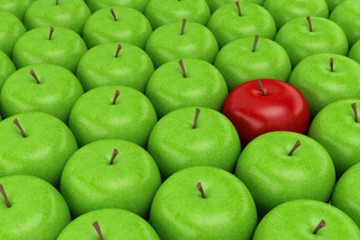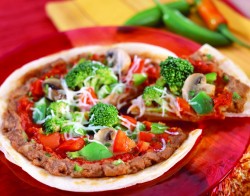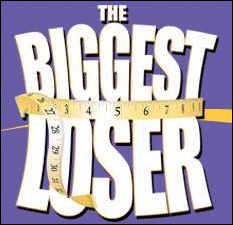How to Follow a 1500 Calorie Diet
Do you need to lose weight for fitness or health reasons? The key to losing weight is diet and exercise. While you may have the drive to hit the gym on a regular basis, you may have trouble managing your food intake. The U.S. government recommends that most men consume 2,500 calories a day while women should ingest closer to 2,200.[1] Many people praise the 1,500 calorie diet to lose those pounds/kilograms, but depending on your body type and sex, this may be difficult to accomplish. Be sure to consult your physician before you make any significant changes to your diet.
Steps
Method 1 Rethinking Your Eating Habits
-
1
Eat three small meals a day. While eating three “solid or large” meals a day may have been the key to growing “big and strong” when you were little, as an adult trying to lose weight this is not what you want to do. The best way to stay under that 1500 calorie ceiling is to eat three small meals a day. Do not eat more than 400 calories for any one meal.
- The most persistent myth in the dieting world is that you should eat six small meals rather than three moderate meals. The idea is that your body will be able to process this food more efficiently, maintaining blood sugar levels throughout the day, and keeping your metabolism in good shape. Science doesn’t not corroborate such claims. It is far more important to find an eating schedule that corresponds to your lifestyle. Can you stop and eat six times a day? Do you have the time to prepare six small meals? If not, don’t worry. You can still lose an equal amount of weight by eating three times a day.[2]
-
2
Stop eating when you are full. Resign from the “clean your plate” club. Eat half of your normal meal. Stop for a moment and assess your hunger level. Give yourself a couple of minutes before you resume eating. This will let your body catch up. You might just discover that you are actually full.
- This is also called "intuitive eating" and could mean the difference between maintaining a healthy body weight and being overweight.
- There still are starving children around the world. Save your leftovers for later meals or snacks.
-
3
Chew your food slowly. Chewing itself doesn’t burn calories or magically decrease the number of calories in your food. By chewing slowly, you are giving your stomach time to report back to your brain after you’ve consumed something. Either your stomach will tell you to keep eating or that it is full. Fast chewers tend to consume more than they need to, because they haven’t waited for their stomach’s report.
- Instead of rushing through your meal, enjoy your food and allow your body to fully respond to the nutrients you are giving it.
- This principle was discovered by a research team at Iowa State University. In an experiment, researchers gave 47 subjects 60 pizza rolls on several occasions. They were told to take fewer or more bites of each pizza roll and then to stop eating when they were full. When asked to take more bites, the subjects ate fewer pizza rolls. Thus, they consume fewer calories.[3]
- 4 Eat two snacks a day. Skipping meals is not the best solution for losing weight. Don’t bank your calories for later. Doing so often leads to overconsumption and even binge eating later on. How often have you “rewarded” yourself later because you skipped a treat earlier on? Because you skipped a snack earlier, you’ll be hungrier later on and more likely to justify overeating. Eating consistent meals and snacks better supports your metabolism and energy levels.
-
5
Practice portion control. Modern portion sizes have grown tremendously and one meal can make up half of your calorie intake for the day. Try using smaller dinner plates for meals, pre-measure food, and avoid eating from the bag. Be aware of portion sizes of foods, especially snacks. If you really want some potato chips for lunch, check the serving size on the back of the package and pull out the exact number of chips that make up that serving size. Eat those and then re-evaluate if you want more and if more chips are worth the corresponding calories.
- Eating off smaller bowls or plates is a simple trick that makes one cup of food on a small plate look like more than if you put it on a large plate. The trick to dieting is finding ways to trick yourself into eating healthy and less. Do what it takes and have fun with it.
-
6
Eat out wisely. One of the easiest ways to break your 1,500 calorie daily diet is to go out and eat large meals at restaurants. Stay within your calorie limit for the meal. Check posted calorie amounts at the restaurant or check out the restaurant’s website. Some restaurants will have a detailed calorie list for all of their dishes, especially if they are chain restaurants. Don’t forget about the calories from drinks, dressings, and dips. They may seem like “side” items, but they still add up.
- Order steamed, grilled, or broiled dishes rather than fried or sautéed entrées.
- Order smaller meals at restaurants. If you cannot avoid getting a larger meal, divide it up when it first comes to the table. Cut your steak into a much smaller portion. Give your friend your excess or take it home for later.
-
7
Drink more fluids. You should drink 11 to 15 cups of water a day, according to the Food and Nutrition Board at the Institute of Medicine.[4] Generally, if you drink enough water so you’re rarely thirsty and your urine is mostly colorless, you’re probably consuming the right amount of water.[5] Water is best, but coffee, tea, and diet drinks are acceptable alternatives. Skim milk is fine, but keep in mind it has around 100 calories per serving. Avoid most juices or other sugary drinks, because they only empty calories.
- One trick that Brenda Davy — a professor at Virginia Tech — suggests is to drink two cups of water right before eating a meal. She argues that water suppresses the feeling of hunger by making the body feel full, which reduces the individual’s need to eat more.[6]
Method 2 Tracking Your Food Consumption
- 1 Justify the time to track your food. Oftentimes, people avoid dieting because they “don’t have the time” to measure out portions or to “count calories.” If you’re serious about dieting and sticking to a 1,500 calorie diet, you need to justify this time expense to yourself. Your diet won’t be as effective without it. Not only will it help you keep up with how many calories you’ve eaten in a day, but it will force you to really evaluate your food choices and your daily routine.
-
2
Use a food tracking app. Using a food tracking tool can be a very useful to help track your daily caloric intake. There are a variety of free smartphone apps available to use such as My Fitness Pal. These apps take the hassle out counting calories. Simply enter your food and let them do the rest.[7]
- Many apps can also scan products you buy at the store. For example MyNetDiary’s Calorie Counter Pro app can scan barcodes while tracking up to 45 different nutrients. This app also has the ability to track your exercise.[8]
- Try a couple of different apps to find the one with the easiest interface for you. If the app is easy to use, it should be easier for you to keep up with.
-
3
Keep a food diary. You should record everything you eat for several weeks. Some people eat without realizing it or thinking about what they are eating. Many people underestimate how many calories they are actually consuming.
- You can purchase a food diary from any diet supplement store, online, or simply make your own. Be sure to use columns to keep track of the day, times when you consume food, a brief description of your food/beverages, and the number of calories consumed. It is also a good idea to note how much physical activity you complete each day. Ideally, you should complete 60-90 minutes of moderate activity daily. Since the key to a successful diet is eating healthy and exercising regularly, recording both food and exercise in the same place will help reinforce both.[9]
Method 3 Choosing Your Food
- 1 Eat more tomatoes. Tomatoes are rich sources of vitamins A, C, and folic acid. They contain a wide array of antioxidants, lycopene, choline, beta-carotene, and lutein. Tomatoes have the added advantage of complimenting pretty much any meal. Eat them whole, slice them up, dice them into small cubes, or puree them and add them to your favorite soup. A single tomato normally only costs around 22 calories, but as a superfood — replete with so many things your body needs — they can be a filling food.[10]
- 2 Eat protein-rich foods like eggs, salmon, and lean meats. Meats have gotten a bad rap in the health community in the last decade or so. This is probably a result of the “skinny” craze. Many nutritionists now tell their clients to eat a protein rich diet for two reasons. First, Protein is far more filling than most other foods. Studies have even shown that eating a protein rich diet can reduce cravings by 60%. Second, your body actually burns more calories a day, simply by eating more proteins. The energy expended to process these protein heavy foods — lean meats specifically — will give you an extra window of 80 to 100 calories a day. This is not a license to eat that much more a day, but it is “food for thought”.[11]
-
3
Consume fiber-rich foods. Cruciferous vegetables like broccoli, cauliflower, and cabbage are extremely high in fiber. So are beans and lentils. Eat a cup of fiber-rich yogurt in the morning to add a quick boost of fiber to your diet. Just make sure that the yogurt you choose isn’t made with a lot of unhealthy sugars and dyes.
- Raspberries are a great source of fiber too. They also have the ability to lower cholesterol. One cup of raspberries has 8 grams of fiber.[12] Doctors recommend that women consume around 25 grams of fiber per day and 38 grams per day for men.
- In particular, fiber-rich foods help fill you up, without filling you out. They have the same weight as other foods, but don’t cost as many calories. So if you are used to eating a big breakfast every morning, try changing out that bowl of sugary cereal for a nice yogurt. See if you are equally full afterwards.[13]
- 4 Try some chili peppers. If you can handle the heat, studies have shown that the capsaicin in chili peppers can reduce appetite and increase fat burning. You can even buy capsaicin in supplement form at many commercial weight loss centers or your local pharmacy. Add some chilis to your pastas, sandwiches, and salads. They can give any meal a little boost of flavor.[14]
-
5
Eat healthy fats. Contrary to popular opinion, eating a low-fat diet is not the key to losing weight. The “low-fat” food craze isn’t all it’s cracked up to be. Many “fat-free” labels mask foods high in sugar, refined carbohydrates, and calories, used to enhance the taste. In general, there are two good fats — monounsaturated and polyunsaturated. Avoid trans fats and saturated fats. Good fats come from many oils (e.g. olive oil, sunflower oil, peanut oil), peanut butter, avocados, tofu, and other kinds of nuts.[15]
- Add some omega-3 fats to your diet too. Good sources of omega-3 fats are fish, walnuts, ground flax seeds, flaxseed oil and soybean oil.[16] Omega 3 fats are processed into energy, which is great for weight loss.[17]
- 6 Avoid foods that have empty calories. Foods that are high in fat and/or sugar are disastrous for a 1,500 per day calorie plan. Donuts, candy, potato chips, ice cream, and other tasty treats are high in calories and offer few beneficial nutrients. Don't waste your valuable calories, which could be used to fill you up, on food "fluff".[18]
-
7
Don’t sacrifice taste. One of the biggest complaints from those on diets is that their food is simply tasteless. Use more herbs and spices like cumin, basil, and coriander. Stay away from salt, which can lead to water retention. You should only be consuming roughly 6 grams of salt a day. Avoid foods that are high in sodium.[19] Low-fat, low calorie food can be hard to eat day after day. Some of the flavor in common foods comes from the fat, but to stick to 1,500 calories a day you need to eliminate much of your fat intake.
- Use freshly toasted nuts to add taste and texture to your meals. Pine nuts pair well with spinach and other sautéed greens. Walnuts work for salads and couscous. If you want to make your own toasted nuts, just set your toaster oven to 250 °F (121 °C), place your nuts on a baking sheet, and cook for four to six minutes.[20]
- Grate a sharp romano cheese on your salad, vegetables, or rice to give your food a nice cheesy taste.
- Add dried fruits like cranberries and figs to add flavor.
- Add low-sodium marinade to give foods a sweet and tangy taste.[21]
-
8
Consult sample menus online. There are many such repositories online that cater to particular tastes. There are menus for fish lovers/haters, vegetarians, smoothie addicts, or anyone else with particular culinary preferences.[22] Here is one 1500 calorie menu:
- Breakfast:
- 2 eggs cooked in 1 tsp coconut oil
- ½ cup spinach
- 1 oz feta cheese
- 1 slice of whole grain toast
- Snack:
- 1 cup of plain low-fat Greek Yogurt
- 1 cup of fresh berries
- 10 unsalted almonds
- Lunch:
- 1 cup of romaine lettuce
- 1 cup of non-starchy vegetables (tomatoes, broccoli, bell peppers, cucumbers)
- 3 oz of grilled chicken
- 2 tablespoons of balsamic vinaigrette dressing
- 1 apple
- Snack
- 10 baby carrots
- 2 tablespoons of hummus
- Dinner
- 4 oz of salmon
- 1 medium sweet potato
- ½ cup of steamed vegetables
- 1 tsp olive oil
- Dessert
- 1 square of dark chocolate
- Breakfast:
- Prev:How to Get a Smaller Waist
- Next:How to Detox
-
Weight Loss Diets: Essential Tips
Losing weight is a challenge that very many people battle with on a d
-
Why You And Your Friend Can Eat The Same Exact Foods And Shell Lose Weight But You Wont
Ever wonder why some women seem to be able to eat all the bread and ca
-
4 Ways Your Smartphone Can Make You Skinny
On January 1, you resolved to lose 10 pounds in time for spring. Six w
-
10 Cats GIFs That Summarize Your Workout Pain
Your alarm goes off and for a second you wonder if its a mistake. Its
-
Weight Loss Does Not Have To Be A Miserable Journey
TIP! Fad diets may seem like the best way to lose weight fast
-
How to Get a Smaller Waist
Having a small waist in proportion to your body shape is considered t
- DON'T MISS
- Weight Management In Four Easy Steps
- Quick Weight Loss Diets Arent The Answer
- Nutritionists Reveal The Most Misguided Weight Loss Advice Theyve Heard
- Take A Healthy Approach To Your Weight Loss
- How To Start Losing Weight In 0.195 Seconds
- How A Fat Man Can Build Muscle & Lose Weight At The Same Time.
- End the Yo-Yo Diet Cycle
- Tricks to Help Lose Weight
- Glycemic Index diets work - study
- Free Daily Diet Plans To Fast Weight Loss




